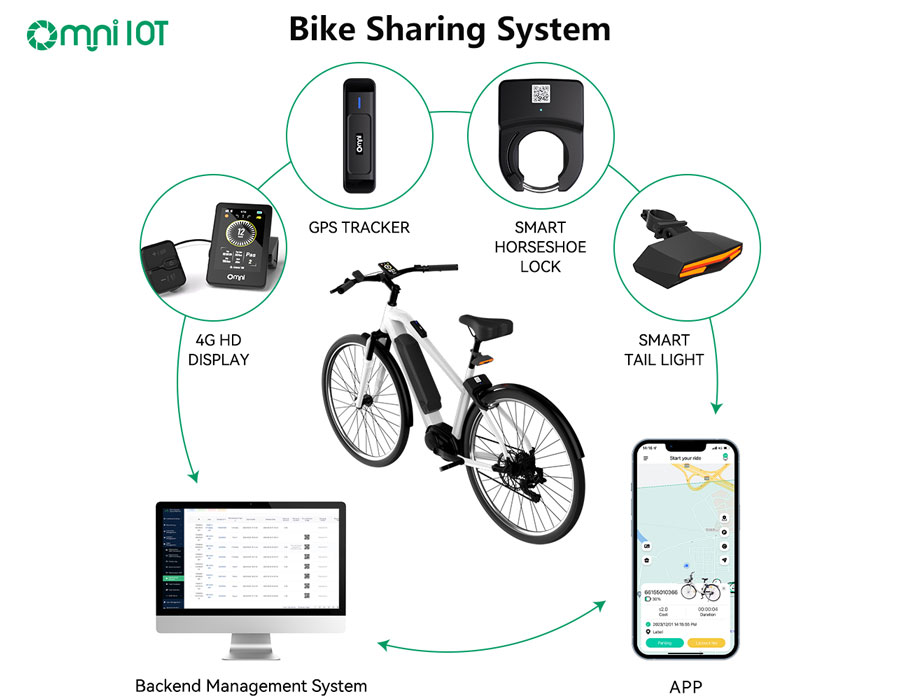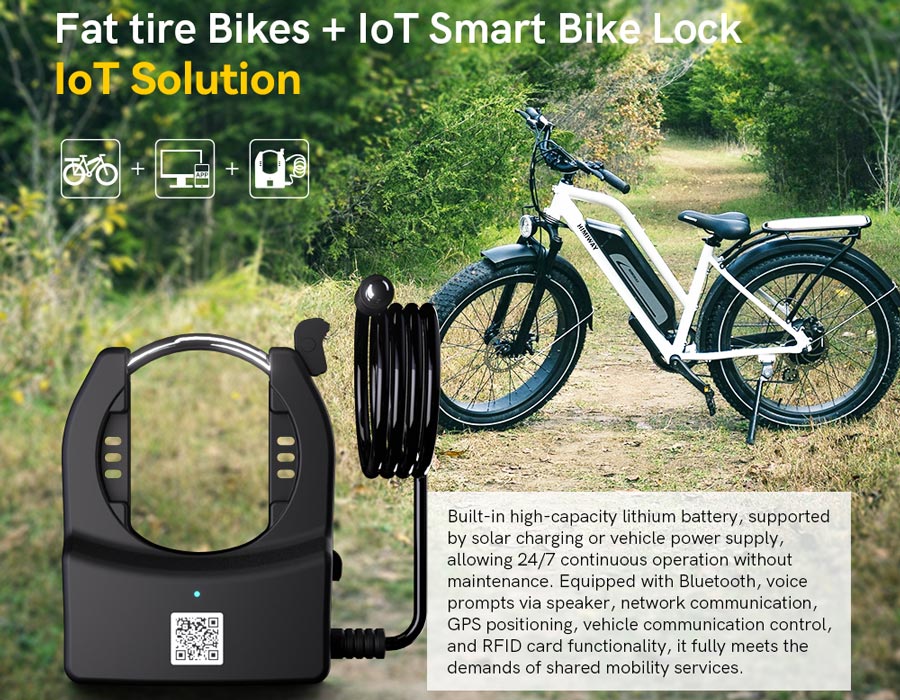Today,most people may think about what a bike sharing system is.In this article,we will primarily introduce and explain what a bike
sharing system includes and the role of each component within it.
As we know,due to the high demand for convenient short-distance travel,rental bikes and rental e-scooters emerged many years ago.
In recent years,rental electric bikes have also become increasingly popular.In 2023 and 2024,e-moped sharing services with different ranges
have gained popularity among young people and are increasingly favored by the public.Speaking of the sharing and rental of these
different types of vehicles,it is naturally inseparable from the vehicle sharing rental system.This article focuses on the bike sharing system,
which can also be applied to electric bikes.

The bike sharing system consists of three essential components:hardware,software,and backend management.
These components include:
Hardware equipment–This includes the bikes and the smart bike locks that enable bike-sharing functionalities.
Software equipment–This refers to the bike sharing app,which handles payments and records all necessary functions.
Backend system–This is an essential management platform for operators running a bike sharing business.
Transforming Bike Rentals:The Smart Bike Sharing System
Bicycles serve as transportation for riders or users in need.However,traditional bicycles do not have sharing or rental functions.In conventional
cases,bikes are only borrowed among acquaintances,or rental bikes are locked at docking stations,requiring manual supervision and record-keeping.
The bike sharing system mentioned in this article is a new type of vehicle-sharing and rental solution.Operators only need to deploy bicycles
equipped with smart bike locks with IoT functions in suitable locations.Suitable locations refer to areas with high foot traffic and strong demand
for bike sharing services.

Seamless Bike Sharing:Scan,Ride,and Pay Effortlessly
Users can scan the QR code on the vehicle,and the smart bike lock will automatically unlock the bike.The bike sharing app will then record
the user’s riding activity.Once users reach their destination,they will park the bike in a designated area.They can enter their payment information
into the bike sharing app before or after the ride.After clicking“End Ride”to return the bike,the system will automatically deduct the rental fee.
As for the pricing,businesses operating bike sharing services will set appropriate pricing standards based on different countries,deployment
locations,and travel distances.
Smart Management:Real-Time Monitoring for Bike-Sharing Operators
Additionally,as mentioned earlier,apart from the bike sharing app,the software system also includes a backend management platform.
Businesses owners can use the platform to monitor the location of all deployed vehicles,usage status of the bikes,revenue details and total
earnings,if electric bikes are used,operators can also check the battery levels of each vehicle.

Building a Bike-Sharing System:Key Components&Cost-Saving Solutions
The above mentioned components form the core functionalities of a bike sharing system.When launching bike-sharing or e-bike rental services,companies may select vehicle models suitable for their specific country and choose certified smart bike lock manufacturers.Regarding
software,if companies do not have an existing bike sharing app or backend system and do not plan to develop one,they can collaborate with
software providers that offer bike sharing apps and backend management platforms.Some smart bike lock manufacturers also provide software solutions,eliminating the need for custom software development and significantly reducing costs.




